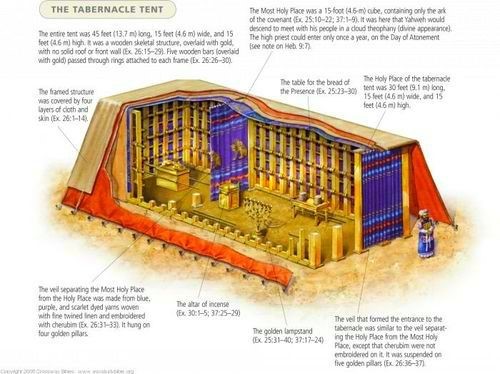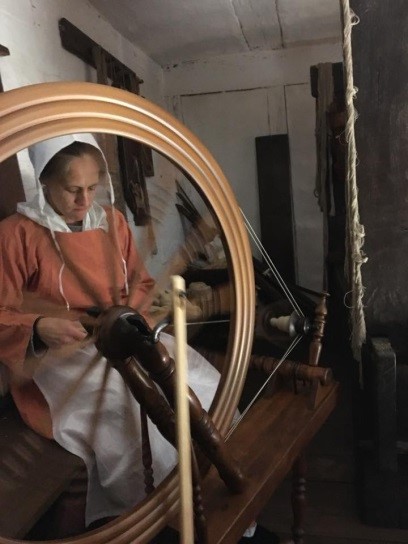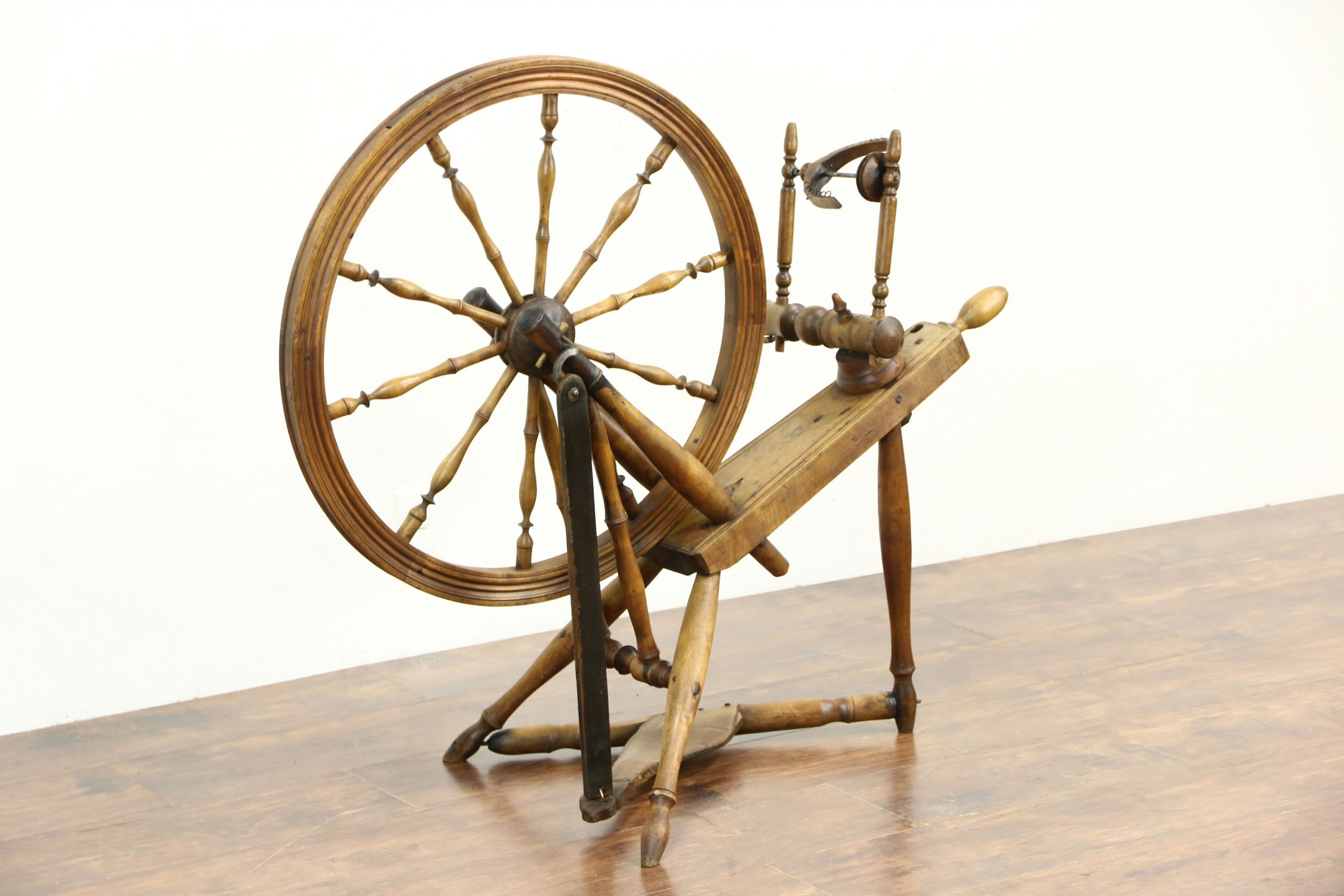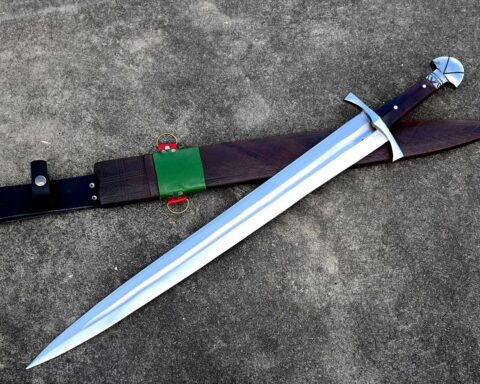Editor’s Note: Last summer, we MOTW and some other friends got together for our annual reunion. One of the other guests was our good friend, Tabitha Merino. Not only is she great company, and a true Lady of the West (Christian, wife, mother), but she is a practioner of some of our lost arts, including the spinning wheel. We were dazzled by her skill, and since then have been asking her to write up something about her abilities. She has finally consented. You are welcome.
What is a Fiber Artist? It is a strange term that most are not familiar with. It describes someone who plays with fiber and makes cool things from it. Fiber arts is a broad term that includes spinning yarn, weaving fabric, sewing, felting wool, dyeing yarn, and more. It is a major part of my life, affecting nearly every aspect. I spend most of my free time playing with fiber sheared off sheep, goats, alpacas, llamas, and rabbits. By working with fiber, I keep busy and feel accomplished. Working with fiber enhances my life in many other areas.
According to God’s word, found in Proverbs 31:27, “She looks well to the ways of her household, and does not eat the bread of idleness.” A woman should keep her hands busy, never letting them go idle. By working with my hands in a creative manner, it leaves less time to be involved in social media drama. It makes me feel like I am fulfilling God’s word. The Bible also mentions fiber arts in Proverbs 31:
Proverbs 31:13 “She selects wool and flax and works with eager hands” (spinning)
Proverbs 31:19 “In her hand she holds the distaff and grasps the spindle with her fingers”(spinning terms)
Proverbs 31:22 “She makes coverings for her bed; she is clothed in fine linen and purple” (sewing, weaving, dyeing)
Proverbs 31:24 “She makes linen garments and sells them, and supplies the merchants with sashes”(weaving, sewing)
Fiber arts are also mentioned in the building of the tabernacle in Exodus 26. God commissions weavers to make cloth for the curtains. Through this story, God seems to be showing the value of things handmade, as well as appreciating the effort that goes into making something. It would have been a long and tedious process. By working in the fiber arts, I can connect and appreciate the time and effort the Israelites took to accomplish this task.

Being active in the fiber arts has held many outreach opportunities for me. I get to take part in historic demonstrations where I can emulate and explain skills that were used long ago, that people now are unfamiliar with. I get to bring people into the past and let them see how the men and women of another time lived and worked. It allows people to understand how little they have to work today. Instead of spinning and weaving all year for one article of clothing, we can just go to the mall and pick something up. What a change!

I have opportunities to teach people fiber art skills. I have participated in fairs and farm shows in which I show both adults and children how to spin and weave. I have gone into schools and engaged children in discussions on the value of spinning yarn and making fabric. I helped provide a loom to a school where the students all take part in weaving a large tapestry. Teaching fiber arts to children teaches them the value of what they are wearing and all the work that goes into it. They can begin to understand the value of creativity and learn to express themselves in a new way. It also encourages them to learn new skills and seek out new ways to do things. It is a great feeling to teach a young person a new skill that they get so excited about.
For me, Fiber Arts has opened conversations with other people who come from different generations and backgrounds. My weaving guild has many members from all different age groups and backgrounds. We work to encourage each other and provide advice when someone has a problem they can’t solve. Age and Ethnicity are thrown out when we are crafting. We have a common bond through fiber arts.
Studying different textiles is another interesting part of fiber arts that I enjoy. I have read about different cultures and how they weave. There are old English tapestries, Scottish tartans, African bark cloth, Italian lace, Oriental carpets, silk kimonos, and many more! Besides just cloth, there are a variety of weaving looms and spinning wheels that come from different countries. All this information provides a plethora of knowledge I get to share with my fiber friends and at demonstrations.
Fiber Arts has brought lots of joy to my life. I get encouragement from the people I interact with at events. I get to spend quality time with my children and others teaching them skills for life. I get to explore all kinds of historical and cultural elements that most people know nothing about. I get to do something that I find fascinating and exciting. And at the end of the day, the creations I finish are a reward for the effort I have put in. It brings glory to God because He has blessed me with the ability to create.










5
4
5